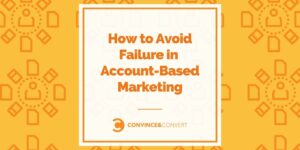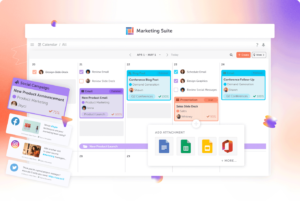How can marketers retain an engaged audience? Treat content like a carousel by getting people to come back for unique value from you and your brand.
Today’s guest is Lindsay Tjepkema, CEO and co-founder of Casted — the first and only B2B marketing platform for brand podcasts. Lindsay knows what it takes to build, grow, and retain an audience.
[podcast_motor_player]
Some of the highlights of the show include:
- Podcast: Opportunity to connect with audience and sales by providing content
- Marketing Channels: Leverage content for podcast business to amplify voices
- Content Challenges: Underwhelming access to software and experts
- Actionable Advice: Be the change you wish to see, and practice what you preach
- Casted: Create, publish, syndicate, and leverage show content across channels
- Content Carousel: What is it, who’s it for, how will you continue to serve them?
- Good or bad thing? Customers stop coming once they get what they came for
- Audit Audience Trends: Downloads, listens, and other signs people stay or leave
- CRM Capabilities: Engagement and retention rates—who listens and when?
- Advocate for Seasons: Make and compare changes, but don’t change audience
- Repurpose content and re-order ingredients to re-engage audience
Links:
- Lindsay Tjepkema on LinkedIn
- Casted
- Creating a Content Carousel for Your Podcast with OpenView’s Meg Johnson
- HubSpot
- Ben Sailer on LinkedIn
- CoSchedule
If you liked today’s show, please subscribe on iTunes to The Actionable Content Marketing Podcast! The podcast is also available on SoundCloud, Stitcher, and Google Play.
Quotes by Lindsay Tjepkema:
- “Is it a bad thing if people aren’t listening or consuming that content anymore? Are they advancing onto the next step? Then, it’s not a bad thing, as long as you keep filling that funnel.”
- “If it is a bad thing, and you’re losing people for the wrong reasons, how can you just go back to the basics? How can you better understand your audience and give them more of what they are looking for?”
- “Repurpose your content. You put a lot of effort into it. If it’s good, it’s good, especially if it’s evergreen.”
- “An expert is someone who knows a lot about the subject matter that your audience cares about.”
[Tweet “How to retain an engaged audience by treating content like a carousel, with @CastedLindsay from @GoCasted.”]
Transcript:
Ben: Hi, Lindsay. How are you doing this morning?
Lindsay: I am awesome. Thank you so much for having me.
Ben: Yeah, absolutely. We were just chatting a little while ago, but it sounds as though you’ve been a listener of the show for a long while now.
Lindsay: I have. I think I was one of your first listeners back in 2015. I said it then, I’ll say it now, I love the actionable advice that’s shared on this show. It’s got a whole lot of pontificating and stuff you can use. I’m going to try to do the same thing here today.
Ben: Awesome. Thank you so much for sticking with us over the years and for now coming on the show yourself. To get our audience up to speed with who you are, what you do, and what Casted is all about, would you mind taking a moment just to introduce yourself to our listeners and tell us what you are working on over at Casted right now?
Lindsay: Sure. I’m Lindsay Tjepkema. I’m CEO and co-founder of Casted. I spent the first 15 years of my career as a marketer—always in B2B. I was on the agency side, I’ve been on the corporate side.
Prior to starting Casted, I was a marketing leader at a global enterprise SaaS business leading content and brands. We had a great content engine going. I was getting lots of great advice from CoSchedule from the Actionable Marketing Podcast and seriously applying a lot of it.
We launched a podcast. I saw the opportunity there to better connect with our audience and actually provide our sales team with better, more engaging content that they could rally behind globally. I was happy that we did it. It did what we wanted it to do, but I was vastly overwhelmed with the software that just didn’t exist for me as a marketing leader, for my team as a B2B marketing team to be able to leverage the type of content that you and I are creating right now for the business.
There’s a lot out there for people who want to do podcasts, but not a whole lot for marketing teams that want to have access to that content and amplify those expert voices across the other channels that marketing teams leverage.
I left the world of marketing, not completely, but I left my role as a marketing leader to be the change I wish to see. I started Casted about a year and a half ago, and was the first and only (right now) B2B marketing platform that’s built around a brand podcast that says, hey, go create a show like you’re doing now. Yes, publish it with Casted, syndicate it with Casted, but also wring it out. Leverage that content across other channels. We have the full-on solution to help make that happen. That’s where we are.
Ben: Very cool. Thanks for filling us in on your background. It’s all great stuff. Something we’re going to talk about—and you had also mentioned earlier so it’s not necessarily an original concept, but it is one that you believe in very strongly in that you practice regularly and also practice what you preach like us as well—is the concept of a content carousel.
Before we get too deep into that, something I want to ask is, sometimes even when you have the most engaged audience in the world, people will drop off and fade away for a multitude of reasons. Whether they’re brands, shows, publications, or whatever, I know that there are things that I used to read or used to follow that I don’t anymore, and I honestly couldn’t tell you why. It’s just a natural thing that I think happens for us.
In your view, what are some of the things that typically might cause a reader, viewer, or a listener—whatever the case may be, to stop following a brand’s content or just drift off and fade away?
Lindsay: When that happens, you just look at yourself. You stopped getting what you came for or you got what you came for, you’re done and you turn around to the next thing. The best thing that anyone can do to avoid that is to continue to ask yourself—what I say is you should ask yourself before you even start a podcast before you go into any content—who is it for and why are you doing it?
Who is your content for, who is your show for, and why are you doing it? How are you serving that audience? What’s it supposed to do for your brand? What’s your goal? Perhaps, there’s some content that exists to meet people at a certain place in some journey—buyers’ journey in developing brand awareness or brand affinity, there’s a certain purpose.
If someone advances on from that further down the funnel, maybe that’s not a bad thing depending on your goal. But if your goal is to hold onto them for a longer period of time, if your goal is to really maintain that relationship—maybe it’s with customers and you want to maintain that relationship and build deeper, deeper trust and credibility with them—continue to ask yourself, who is it for? How are we serving this audience, and how can we continue to give them what they’re looking for and provide them with valuable information ongoing over time? How can you continue to entertain them, educate them, or give them something that they can’t get anywhere else?
One, ask yourself, is it a bad thing? If people aren’t listening or continuing that content anymore, are they advancing on to the next step? Then it’s not a bad thing. As long as you keep filling that funnel.
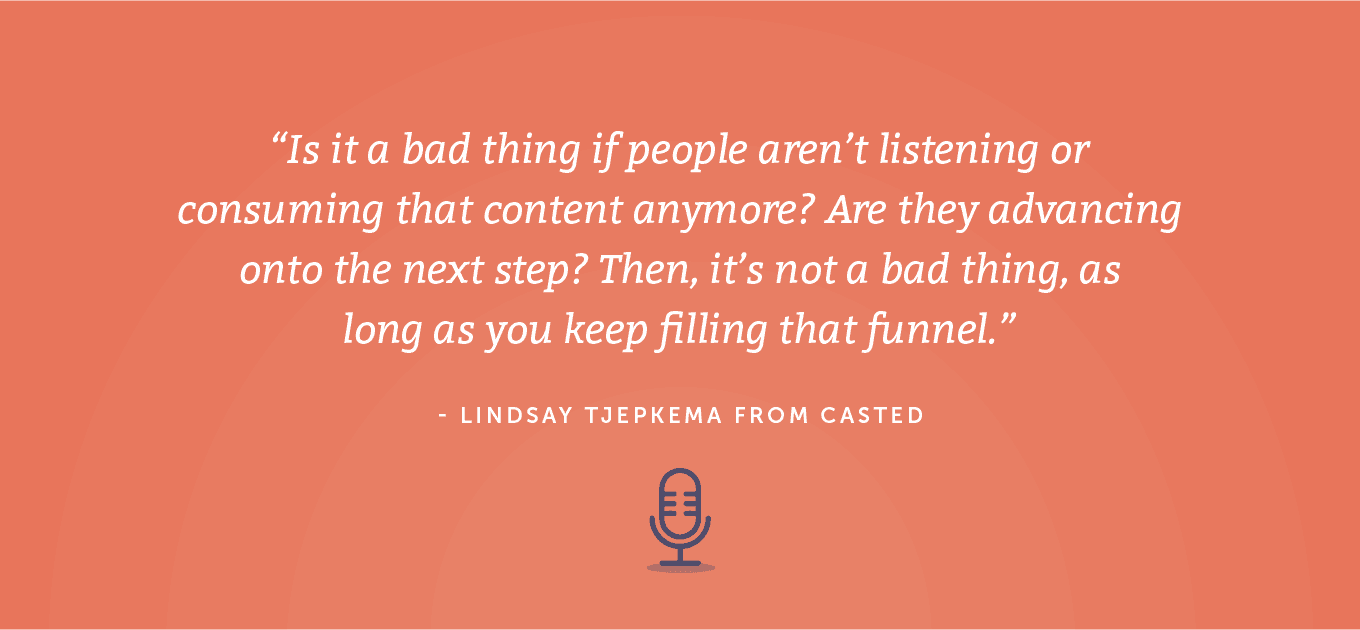
Two, if it is a bad thing and you’re losing people for the wrong reasons, how can you just go back to the basics? How can you better understand your audience and give them more of what they’re looking for? Even if that means changing the format, changing the topic, or changing the content a little bit?

Ben: Sure. I think that all makes a lot of sense. I understand that as part of this content carousel concept. It sounds like you have a set of solutions to this problem that are collectively intended to make your content function. Like a carousel, if we can all mentally envision how a carousel operates, you keep people coming back in a circle.
I think this is important since we’ve mentioned this term several times already without really explaining how it works. Could you explain, what is a content carousel before we get too much further along? How do you go about building one? Obviously, we’re not going to get out the tools and go build a carousel in a literal sense. I’m curious what that actually looks like in practice.
Lindsay: Sure. I definitely need to give credit to where the term originated. One of our customers at OpenView Partners, her name is Meg Johnson. She is the host of their show and they do some incredible work with their podcast and with their related content.
I don’t want to try to capture her words but what it means to me in the way we talked about it at Casted is amplifying your content, bringing out that content, and saying, okay, start with a show. Start with a conversation like you and I are having right now, and saying, okay, great. I’m going to capture the expertise of guests on our show—people that my audience wants to hear from—because I know who they are and why we’re doing it. Okay, that’s step one. Publishing the show is step one.
How can I wring it out? How can I take that content and use it in other ways? How can I use it to fuel my blog posts? How can I use the transcript to fuel my blog posts? How can I leverage the transcript to increase SEO value and also give my audience something richer and deeper to dig into if they want to look at the textual version of that conversation?
How can I wring out that content on social media and use clips to draw people in to listen to the bigger conversation? How can I fuel my sales team with content that really matters to their audience, to the prospects that they’re talking to? At what point in the conversation did the guest mention some stats, actually get into a point where they were talking about a testimonial or a little bit of a used case that my sales team would just love to get their hands on?
It’s looking for different opportunities to wring out that content and use it across other channels. I hope I’m doing Meg from OpenView justice about something that pours perspective on it. It’s saying, if I start with this in the core, I provide value with the core, and I’m fueling all the rest of my channels with that great, rich content. It creates a flywheel by saying, I’m giving my audience more and more ways to engage with this content, to consume this content in ways that are valuable to them, ways that they want to consume content.
If they start here, they start in the center, they start that podcast, and they’re interested in learning more, digging into some more actionable information, getting tips—there are those options and opportunities for them to dig deeper. To her point, is it a marketing merry-go-round or a content carousel? I think it’s the way that she put it in our interview. It just spins and spins and gives your audience more and more to sink into.
Ben: I think that’s straightforward enough. How should marketers go about diagnosing whether their content is losing its appeal to the audience or not? There are probably some obvious signs like your podcast downloads or listens go down, your blog traffic goes down, your YouTube views go down. It’s also possible that you could be just flatlining because you’re bringing people in about the same rate as what […] are leaving.
You might have a problem there without realizing it because your numbers aren’t telling you the whole story. From your perspective, how would you recommend that marketers go about auditing their presence on their channel, or their audience to see if this is a problem for them in the first place at all?
Lindsay: Great question. That was one of the things that frustrated me in starting a podcast in my past life, and it led us to start Casted. What do downloads really mean? If it’s a number, then numbers simply go up or down. Downloads only mean that somebody subscribed to my podcast and it was pulled down by their device. It doesn’t even mean that they listened to it. And what if they listened to it 566 times? It’s still just counted as one download. That creates a lot of problems.
Specifically, what we did in the Casted platform—in the bigger picture why I think it’s still important—is that to your point, marketers need to know more about engagements and impact on the brand and the bottom line. Is what I’m doing as a marketer making a difference? Am I doing the right things? Is it fueling pipelines? Is it contributing to revenue in any way?
One thing that was important for us to start with was engagement metrics like, yes listenership—overall listenership. Are people listening, are they completing the episodes? You can watch if that trends up or down. But then there are also new listeners versus repeat listeners.
To your point—again, depending on who my show is for, what I’m trying to do, what the content is about—if I have a certain number of listeners and that number stays more or less stagnant but I see that they’re all coming back and my retention rate essentially is high. Then I’m starting to hear anecdotally some feedback that correlates with that like, hey, our customers love our podcast; this, this, and this; and this is what we’re seeing as a result. Our retention rate is higher, our loyalty is much higher. It seems like they trust us more. That seems like it’s doing well.
Now if on the other hand, your intent is to generate more and more awareness, it’s the very top of the funnel, and you don’t have more and more new listeners, that’s a problem. Being able to see things like new listeners versus repeat listeners, that’s important.
Also, we added integration for anybody who uses HubSpot for CRMs. You can see not only how many people are listening, but who is listening. I can see if Ben came and listened to our show. It shows up in the timeline just like Ben opened an email and Ben came to the website. I think that’s important too. We, for one, are expanding into more theorem capabilities and you’ll see that more as time goes by.
Ben: It seems like such a simple piece of advice but because it’s so simple, I think that it’s one that’s easy to overlook. That’s to make sure that your content is really, truly, actually focusing on the things that your customers care about the most.
Of course, as marketers, we always think that we’re giving people what they want, but if we aren’t listening, we’re getting complacent, or if our market changes and we don’t change with it, it can be easy for people to slip away without our notice. I think it’s also true that if we aren’t dedicated to continuous improvement in our work, it also leaves room for other competitors who are maybe hungrier, more innovative, or more ambitious than us to slowly eat our lunch without our notice.
If you’re seeing the clients, your audience size, your engagement, your traffic, your conversions, or other key metrics, the best place to start finding solutions is to just go back to the very basics. That all begins with just talking to people. They will tell you what it is they’re looking for if you’re willing to listen. Now, back to Lindsay.
Once marketers have taken those steps, they’ve assessed where they’re at with their audience—good, bad, or neutral, whatever the case may be, what would you recommend they do next? What do you do differently with your content versus what you were doing before to maybe either double down on what’s working or to shore up what isn’t?
Lindsay: I’m going to zoom out from that even one tick more. I think, generally speaking, I’m a big advocate for seasons. I’ve been in the role where we’re going to do a podcast every Wednesday forever and ever and ever. It’s always going to be about this topic, and it’s going to be great.
The problem with that is you’re going to paint yourself into a corner and you don’t have an opportunity as easily. Nothing’s impossible, but it’s not as easy to take a beat to say, how did this season compare to last season? When we changed this one thing, was that a good thing or a bad thing? When we changed up the host, we looked at the topic from a different angle, or we changed the format, what did it do?
When you do seasons, you have those opportunities, and it’s not as jarring to the audience to say, hey, we’re going to take a break for a week, a month, a quarter, whatever it may be. When we come back, things are going to be a little bit different. The audience expects it.
We’ve actually done that. Season one was about the host of shows. It’s always been about marketers with podcasts, but season one was about the host of the shows. Season two is about the unheard voices, behind the mic (if you will). Then season three was about from a leadership perspective, how are you prioritizing podcasts, and so forth.
It’s always the same audience. You’re not changing up who it’s for but you’re changing up the subject matter a little bit. We could compare over time, wow, our audience seems to like this topic versus this topic. That tells us even a little bit more about who they are and what they’re looking for in our show.
To get to your question, when you have that data, then you can go back and say, okay, we changed this one thing—that was a good thing or it was a bad thing, or we haven’t tried this other thing yet and I think that we should. It’s all data. You just need to set yourself up with the ability to compare that data. Because if all you have is just an ongoing show, you don’t know what your variables are so it’s hard to compare over time what you’re doing differently.
Ben: Absolutely. One point that I think is also something that gets talked about a lot and that’s maybe related to this concept of building a content carousel is the idea of repurposing content. In fact, we hear this all the time whether or not everybody necessarily abides by it or actually applies it as much as they should or as well as they’re capable.
From your perspective, where do you think that repurposing content fits into this whole picture, and how does repurposing specifically help reengage people who might have fallen off the map for you?
Lindsay: Yes, repurpose your content. You put a lot of effort into it. If it’s good, it’s good especially if it’s evergreen and has a nice long shelf life. Especially if you start with an expert voice, if you start with a show, yes we’re in a podcast right now but maybe it’s a video.
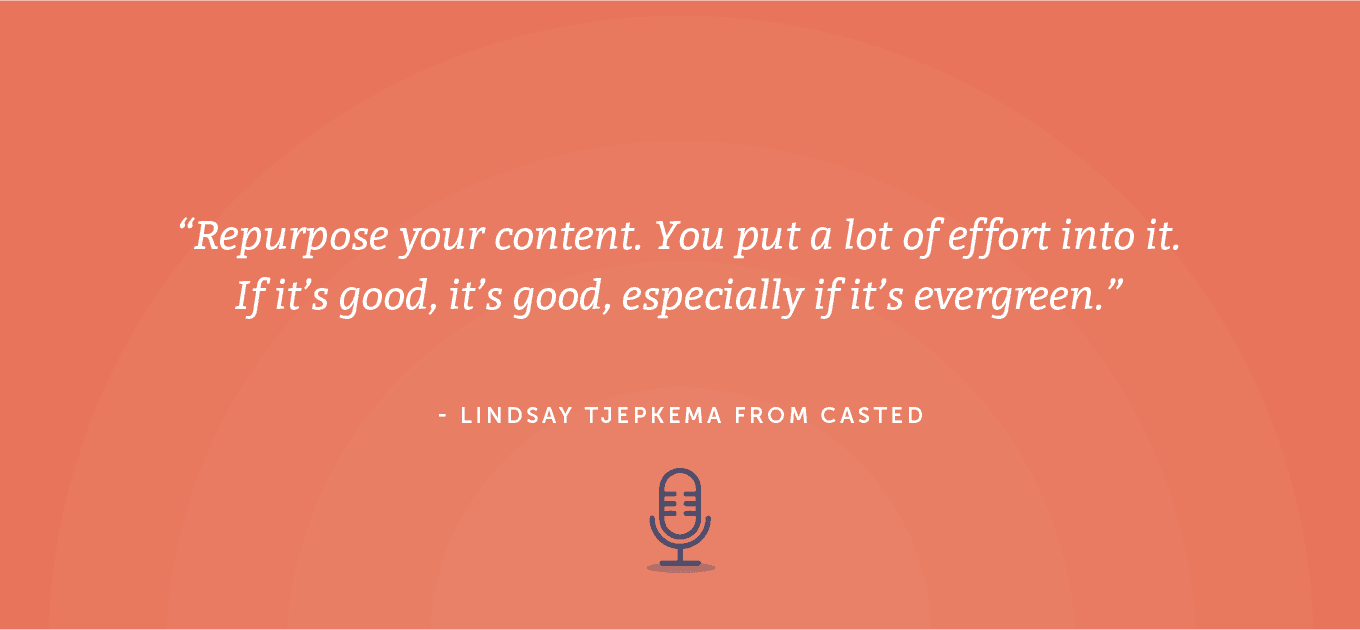
If you are interviewing experts—and that doesn’t have to be an author, that doesn’t have to be an influencer, it’s an expert. An expert is someone who knows a lot about a subject matter that your audience cares about. That can be your interns, that can be your engineers, that can be your CEO, that can be anyone.
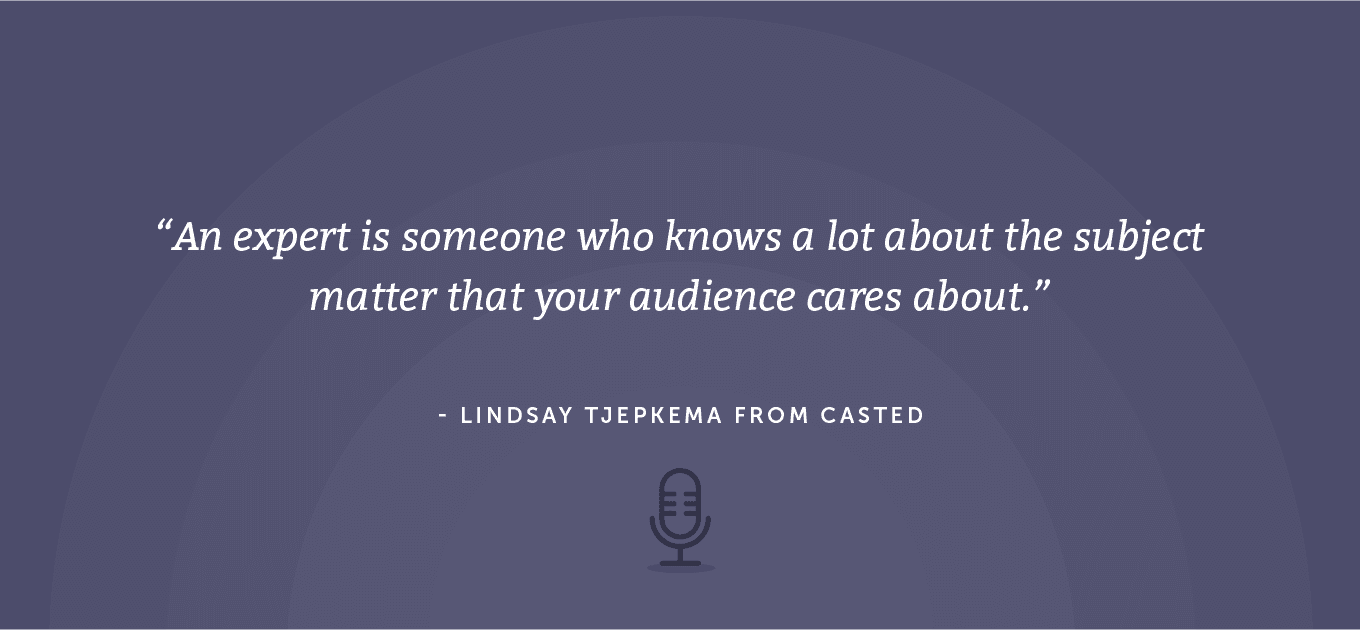
Who is it for and what do they care about? Interview those people. If you’re starting with that, then what you’ve got is an hour, a half-hour, 15 minutes, whatever it is, worth of valuable, rich, original content that only you have.
Don’t stop with simply making it into a show. Do that first, but then bring it out across other channels that we’ve talked about before, use that—that’s kind of that Meg’s content carousel is used across other channels. But then as you’re doing that—let’s do something arbitrary about apples.
We’re talking about apples. You bring in apple experts onto your show and you bring that out across all of your other channels. Then think about what are the other interviews that we’ve done? What’s the other content that we’ve produced about apples, about fruit, about fall foods, or about pears? What other angles can you look at that to say, what do we already have that we can either republish, repromote, or pull parts off to pull into new content?
If your audience cares about apples, they’re going to care about everything you have to say about apples. It gives you an opportunity to not only be more engaging with your audience and give them more of what they’re looking for but to be more efficient—which marketers are always looking for—by reusing content you’ve already put a lot of effort into.
Definitely take a moment. I think the simplest way to do that is to keyword search in whatever your content database is. Keyword search in your blog, keyword search in your database—wherever you’re hosting it.
In Casted, we have search capabilities that search your transcripts, all of your show titles, and everything as well so you can go back through that content. Whatever way works for you with the tools you already have, just do a simple search for the content you already have access to and think about different ways that you can include it along with that new content that you’re putting out there.
Ben: For sure. That’s great advice to leave our audience with. Before I let you go, is there anything else that we haven’t touched on in regards to this topic that you feel is important that people understand after they come away from this conversation?
Lindsay: Along the same lines but a little bit bigger picture is we’ve all been doing content marketing in a very similar way—kind of from the same playbook—for the last, in my whole career, so 15–20 years.
There’s nothing wrong with it, it’s very blog-centric, SEO-centric. That served me well throughout my career, it served a lot of people well. There’s nothing wrong with it, but what that does is it focuses on blogging and SEO first and foremost and then says, cram everything else in around the sides, push those videos, podcasts, and all the other rich media that your audience wants into the margins. That has put a lot of pressure on marketing teams.
I’ve lived it, I think a lot of your listeners are living it now. I guess I would just encourage everyone listening to say, hey, what if you just turn that on its side? Thought about things a little differently and said, instead of blog-blog-blog, SEO-SEO-SEO, everything else in the margins, what if you still had all of these ingredients but you just reordered them and said, I’m going to go have some conversations. I’m going to capture those conversations, publish them—whether it’s something simple in social media, in a podcast, or on the show—and then I’m going to wring out all my content from there.
I’m still going to do the blog post, I’m still going to do social media, but I’m going to start with that source content straight from the mouth of the expert and see if it makes your life a little bit easier and your content a little bit more effective and engaging.
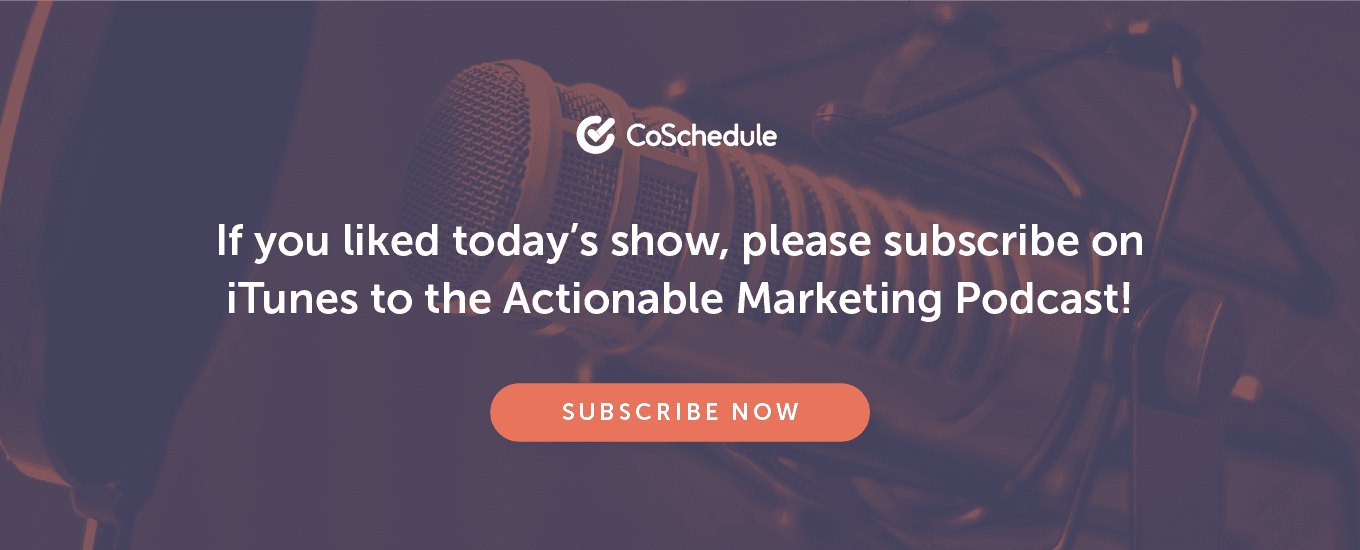
The post How to Retain an Engaged Audience by Treating Content Like a Carousel With Lindsay Tjepkema From Casted [AMP 215] appeared first on CoSchedule Blog.

![You are currently viewing How to Retain an Engaged Audience by Treating Content Like a Carousel With Lindsay Tjepkema From Casted [AMP 215]](https://www.dimaservices.agency/wp-content/uploads/2020/12/215_Lindsay-Podcast-Graphics_header.png)
